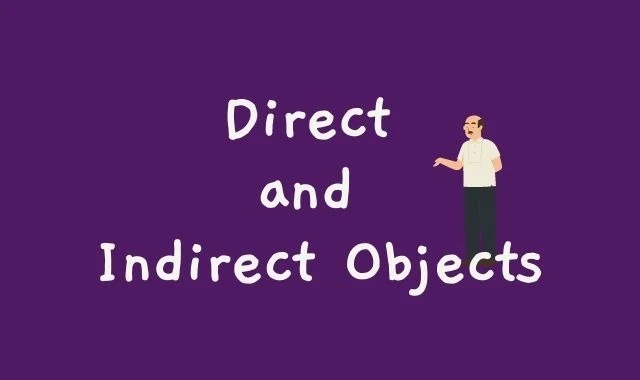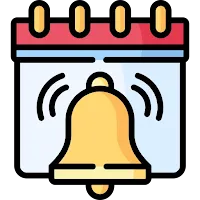Direct and Indirect Objects
Introduction
Have you ever wondered what makes a sentence clear and impactful? The answer often lies in the use of direct and indirect objects. These crucial elements determine who or what receives the action in a sentence, adding depth and clarity to your writing. Whether you're a student aiming to sharpen your grammar skills or a teacher looking for effective ways to explain complex concepts, understanding direct and indirect objects is essential. In this article, "Direct and Indirect Objects," we'll explore how these components work together to enhance your sentences and improve your writing skills. Let's dive in and unravel the mysteries of direct and indirect objects!
Direct Objects
What is a direct object?
A direct object is a complement that tells who or what receives the action of a verb or shows the result of the action.
REMINDER
A complement is a word or word group that completes the meaning of a verb.
How to identify the direct object in a sentence?
To identify a direct object, ask Whom? or What? after a transitive verb.
NOUN
- The accountant usually hires an assistant during tax season. [Whom does the accountant hire? The accountant hires an assistant.]
PRONOUN
- Did the dog bury it? [The dog did bury what? It buried it.]
WORD GROUP
- I will take whatever is available. [I will take what? I will take whatever is available.]
A direct object may be compound.
EXAMPLE
- We drove Mary and Sam to school. [Mary and Sam tell who receives the action of the verb drove.]
Objective Complements
What is an objective complement?
An objective complement is a complement that helps complete the meaning of a transitive verb by identifying or modifying the direct object.
A sentence can have an objective complement only if the sentence has a direct object.
An objective complement may be a noun, a pronoun, an adjective, or a word group that functions as a noun or an adjective.
EXAMPLES
- Many people consider Tiger Woods a positive role model for youth. [The compound noun role model identifies the direct object Tiger Woods.]
- We painted the shutters green. [The adjective green describes the direct object shutters.]
NOTE
Only a few verbs take objective complements. These verbs include consider, make, and any verbs that can be replaced by consider or make.
Verbs that can be replaced by consider or make include appoint, believe, call, choose, color, cut, dye, elect, find, keep, name, paint, render, and sweep.
An objective complement may be compound.
EXAMPLE
- Competition in business often makes products more affordable and available. [Affordable and available form a compound objective complement describing the direct object products.]
<->
Ready to boost your students' grammar skills? Explore our exciting "DO or IO? A Grammar Game Show" for a fun learning experience! Check it out.
Indirect Objects
What is an indirect object?
An indirect object is a complement that often appears in sentences containing direct objects and that tells to whom or to what or for whom or for what the action of a transitive verb is done.
A sentence must have a direct object in order to have an indirect object.
Indirect objects usually come between the verb and the direct object.
EXAMPLES
- Our grandparents brought us some peaches from Georgia. [The direct object peaches receives the action of the verb brought and tells what was brought. The indirect object us tells to whom the peaches were brought. The indirect object us comes between the verb brought and the direct object peaches.]
- Our math teacher allows whoever has been absent two days for make-up work. [The direct object days receives the action of the verb allows and tells what is allowed. The indirect object whoever has been absent tells for whom the teacher allows two days. The indirect object whoever has been absent comes between the verb allows and the direct object days.]
NOTE
Be careful not to confuse an indirect object with an object of the preposition to or for.
INDIRECT OBJECT
- The officer read the suspects their rights. [The indirect object suspects tells to whom the officer read the rights.]
OBJECT OF A PREPOSITION
- The officer read the rights to the suspects. [Suspects is the object of the preposition to.]
An indirect object may be compound.
EXAMPLE
- I always bring my brother and sister souvenirs from camp. [Brother and sister tell to whom I bring souvenirs.]
Summary
Direct and indirect objects are two of the most important parts of a sentence. They are used to indicate who or what receives the action of the verb. Direct objects receive the action directly, while indirect objects receive the action indirectly.
To understand direct and indirect objects, it can be helpful to use real-world examples. For example, consider the sentence, "I gave the ball to my friend." In this sentence, "the ball" is the direct object, because it receives the action of the verb "gave." "My friend" is the indirect object, because it receives the ball indirectly.
By understanding direct and indirect objects, you can improve your writing skills. You can use them to make your sentences more clear, concise, and interesting.
Direct and Indirect Objects Quiz
Decide whether the underlined word or words is a direct object, indirect object, or objective complement.
Direct and Indirect Objects Quizizz Quiz
Conclusion
Mastering direct and indirect objects can significantly elevate your grammar skills, making your writing clearer and more engaging. By understanding how these elements function in a sentence, you can construct more precise and impactful statements. Keep practicing with the examples and activities provided, and revisit this guide whenever you need a refresher. Remember, the key to mastering grammar lies in consistent practice and application. Happy writing, and may your sentences always be clear and captivating!




